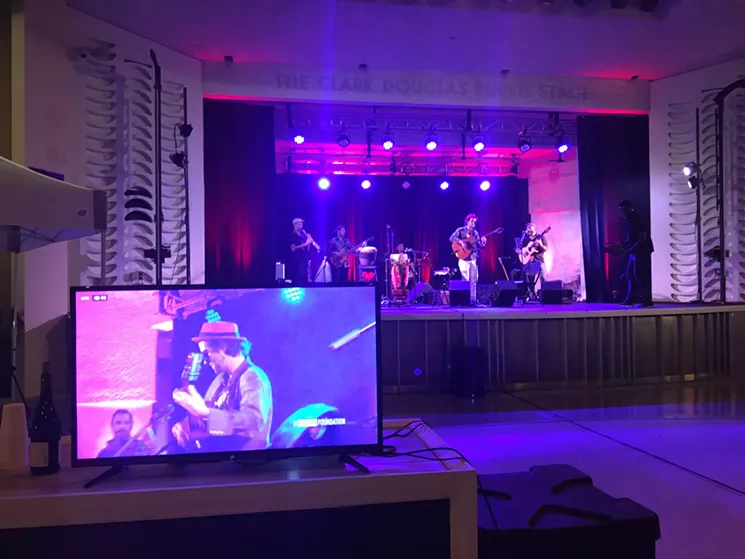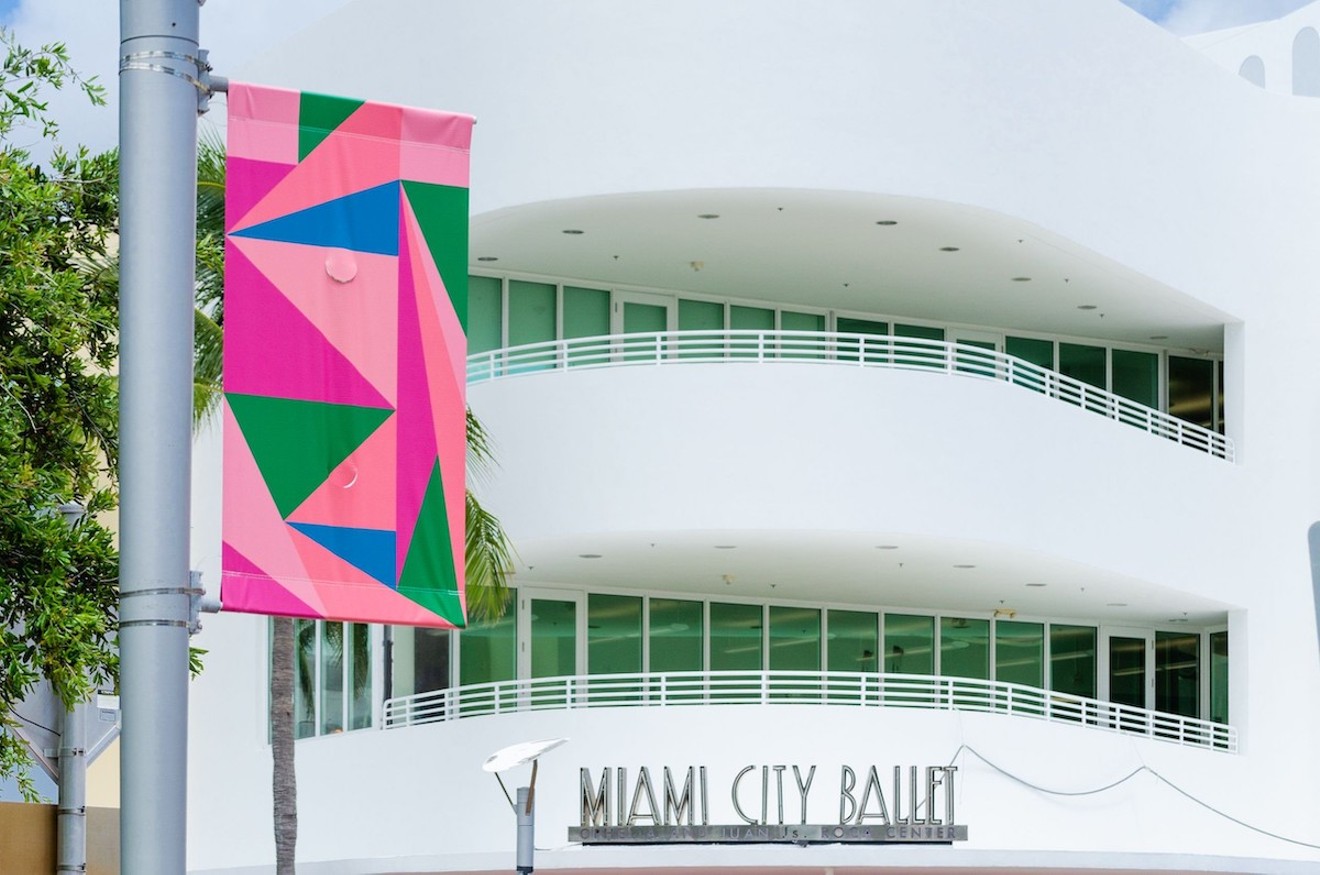"We believe that the best version of the city is as an art-and-culture destination,” he says. “And if we don't have a vibrant arts community, that version becomes less attainable."
In an effort to help keep one of the city’s most valuable assets viable, the mayor and City Commission — in partnership with the Miami Beach Cultural Arts Council — approved the distribution of $1 million in funds to 13 arts groups. What came out of that funding has exceeded the original intent: The COVID-19 Emergency Relief Fund that was intended to help Miami Beach arts organizations stay afloat during the pandemic has ended up giving them a nudge into the future, forcing them to look ahead to a post-pandemic world and consider what can keep them relevant and a significant part of the community.
It happened almost organically, with the money and the downtime of the past months combining to help groups explore beyond what they had been doing for so long.
"We had to put on our thinking caps on how we could continue our mission, which is to promote, preserve and protect, but how to do it in this new era?" says Daniel Ciraldo, executive director of the Miami Design Preservation League, one of the beneficiary groups. "What the funding did was allow us to continue, but to pivot toward digital, which makes us resilient in the future."
In addition to the preservation league, the other recipients include the Wolfsonian-Florida International University; the Bass Museum of Art; the Rhythm Foundation; Holocaust Memorial Miami Beach; Jewish Museum of Florida-FIU; O, Miami; Miami Beach Botanical Garden; Miami Beach Urban Studios-FIU; Miami City Ballet; Miami New Drama at the Colony Theatre; New World Symphony; and O Cinema South Beach.
Before the pandemic, the preservation league had wanted to develop an app to guide visitors on its art deco walking tour. Thanks to the grant from the city, the project went full steam ahead and the app is now live.
The organization also has been digitizing its historical archives, including photographs from the time of the Great Miami Hurricane of 1926 and beach fashions from the 1940s
"So much of it was in storage," Ciraldo adds.
The archives aren't only great for the future, he says, “but great for right now, [for] people who want to learn about the preservation movement but right now don't feel comfortable visiting in person."
Meanwhile, for the Bass, which reopened its doors on September 16, this has been "the moment to experiment," says executive director Silvia Karman Cubiñá.
“The money helped us keep the staff on and helped us to look at new ways of conceiving what a museum could be — not just in a logistical approach but philosophically, too,” she adds.
Adopting new technology to help make the Bass more relevant had been on the bucket list, Cubiñá says, but those tasks were always put on hold for varied reasons.
While the Bass has as its mission to be a steward for art in Miami Beach's public places, the pandemic and the funding from the city led to the planning of a more cohesive outdoor project: the Art Outside program. Designed to bring public art directly to the people, outside of the confines of a museum building, works are being created specifically for the program. These include an outdoor banner display by Karen Rifas that was installed during the summer in partnership with Oolite Arts and a mural that is being created by Arturo Herrera.

The Rhythm Foundation offered a Fete de la Musique livestream performance in June 2020.
Photo courtesy of the Rhythm Foundation
"We rejuggled every job description to see how we could service our members through digital," she says.
For the Rhythm Foundation, which was tapped by the city to manage the North Beach Bandshell in 2015, the challenge was: How do you keep an arts organization going when your existence is built around live performers and an audience sitting close together in an almost 1,400-seat oceanfront amphitheater?
Director James Quinlan says they did the “pandemic pivot,” streaming performances that are presented live at the bandshell but without an audience.
"The grant allowed us to continue doing what we do by having virtual programming on a live stage," Quinlan says.
The grant also helped the foundation invest in multiple cameras and high-tech sound equipment, which has in turn expanded business for the city's bandshell and its offerings.
"Groups are now coming to us because of our capabilities. We have more organizations performing in this venue than ever before," Quinlan explains. "We have an entire fall season of virtual programs that are our own, but we’re also working with other cultural organizations to have a diverse range of deep cultural offerings.”
Deputy director Benton Galgay said the relief funds have helped with practical expenses, too. For example, when the green light is given for the live venue to open to the public again, the foundation will be able to get ready at a moment's notice, with additional signage needed to safely usher in audiences and other security measures.
"We now have the ability to change gears to go from a virtual space to a live space and welcome in members of the public safely," says Galgay, though he added that producers plan to also keep livestreaming events even post-pandemic.
In establishing the relief fund, 16 organizations were chosen as “cultural anchors,” defined by the city as "institutions physically based in the city of Miami Beach, whose primary mission is year-round artistic and cultural programming that contributes significantly to the cultural life of the City of Miami Beach," according to Brandi Reddick, the city’s cultural affairs manager.
Of those 16 organizations, 13 applied and received the grant.
The grant amount was based on each organization's annual budget. Those with budgets below $750,000 could apply for up to $50,000 in grant money; those with $750,000 to $3.5 million could receive up to $75,000; and for those above $3.5 million the threshold was $100,000.
There are plans to launch the second Miami Beach Cultural Arts COVID-19 Emergency Relief Fund in the upcoming fiscal year, with an additional $1 million coming from an emergency reserve fund that was established in 1998.
"I can't imagine that this isn't an emergency,” Gelber says. “We're using it for exactly what it was set up for.”
That second fund disbursement will be assessed by the cultural arts council beginning in October. According to Reddick, the council has not yet finalized the criteria. When it does, guidelines and application instructions will be available at mbartsandculture.org.
– Michelle F. Solomon, ArtburstMiami.com











